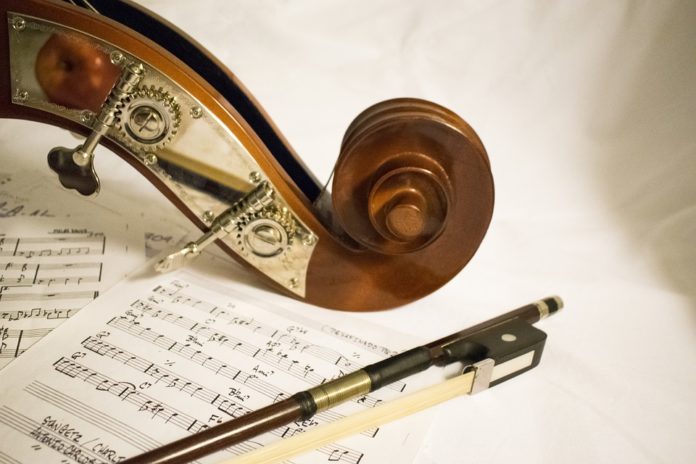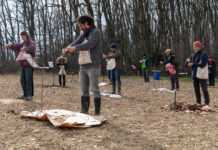For several years now I’ve been interested in exploring works made up of short, discrete units or modules, each of which corresponds to a gesture and its associated sounds. The Sound Row series, begun in 2012 and written for different types of instruments, exemplifies this approach. What follows are some general observations about this kind of work.
A modular gestural work can be thought of as an instance of a vocabulary of independent sound-producing gestures and the combinatorial rules by which to arrange them. At the micro level, each individual event/sound gesture is a module that can in theory be substituted for any other: It is an independent element or building block of the whole. At the macro level, the ordered row of individual gestures may be handled as a single unit—a super-module, as it were–to be deployed, varied and put in relationship to itself and/or its variants through sequential juxtaposition.
When music is built of gestures, form is a function of effort–that is to say of the physical action used to produce the sound. But it is also a function of relating these gestures to each other in a structurally productive way. Joining individual gestures must somehow provide the piece with a sense of cohesion and development; exactly how they are joined will color the development of the piece and supply the logic by which it can unfold.
The modular work I’ve done is paratactical, that is, work in which individual modules or sound events are related to each other in a coordinate rather than subordinate manner. The type of nesting hierarchy one finds in syntactic arrangement or logical implication is absent here, as is the kind of forward-pointing structure implicit in functional harmony.
When arranged paratactically, events are placed side-by-side (or more accurately, one after the other), thus taking on a cumulative or additive structure. Each event creates the context for the event that follows it based on the qualitative criteria of likeness or contrast as applied to the musical parameters they embody, i.e., their timbres, pitches, durations or dynamics. The parameters in terms of which qualitative criteria are applied may be chosen freely and changed depending on what kind of effects or profile the piece is intended to have.
Having likeness and contrast as linking criteria serves to structure the piece in terms of the differing degrees of tension between events. Likeness and contrast are in a sense more general terms for relationships of lower or higher tension; thus events that are alike create fields of lower tension while events that are unlike create fields of greater tension. The piece then takes the overall form of a tension field, comparable to an abstract painting with its tensions built of color contrasts, varying densities, areas of open or negative space, and so forth.
Enabling the construction of the gestural work as a tension field is the pivotal role of silence. Periods of non-action, embodied in silences or passages or negative space, define the boundaries and serve as the joints between sounding events. Silence is a crucial linking or conjunctive element, an element with a structural function for creating and clarifying relationships between events and for creating the conditions under which events can provide the context for each other. This structuring function is realized as a separation of sounding events; through separation the work’s internal relationships—that is to say, the relationships between its events– are set out. Silence in this sense brings out the temporal dimension of the piece: A rest separates events into before and after and allows the event(s) preceding it to crystallize in the listener’s memory, thus providing a kind of measure against which to compare subsequent events.
Silence allows the sequence of gestures to be structured as a field rather than a line. The difference is one between conventional linear development on the one hand and organization by virtue of a more plastic interaction of modules across temporal boundaries on the other. In the end, we have a collection of events related to each other in balance and counterbalance, in sonic conflict and concord as the case may be.







